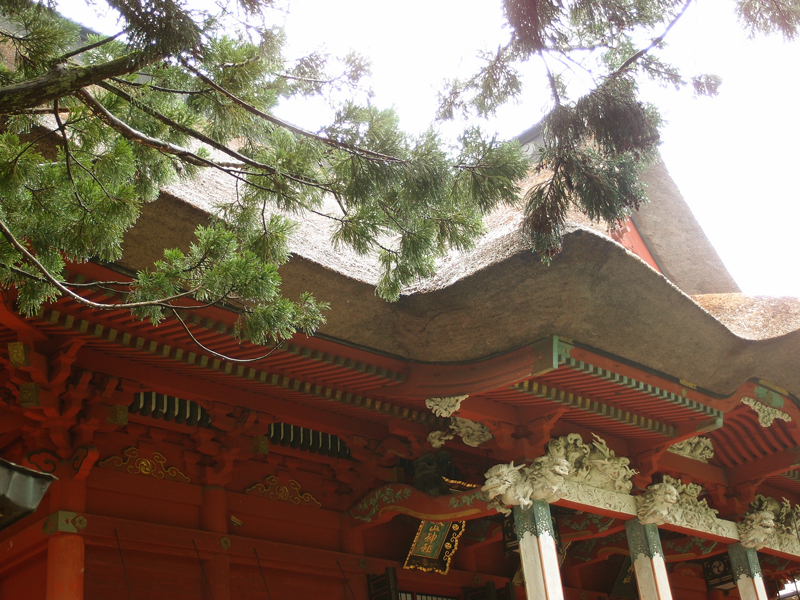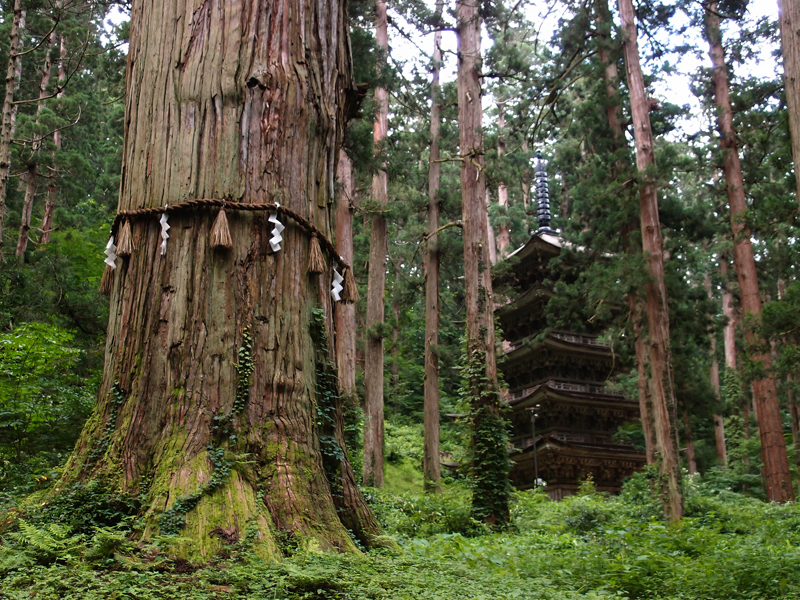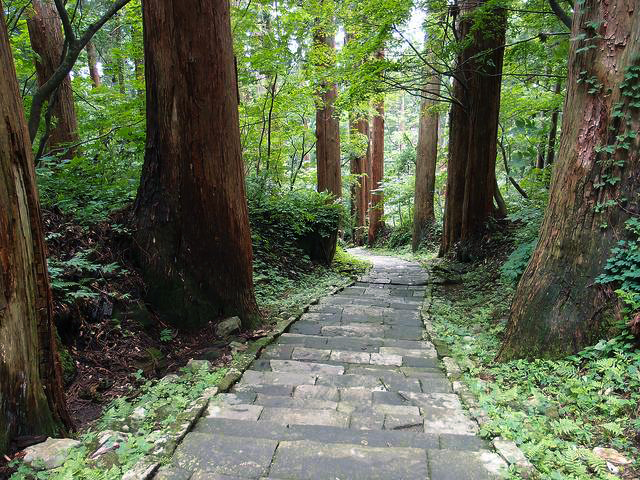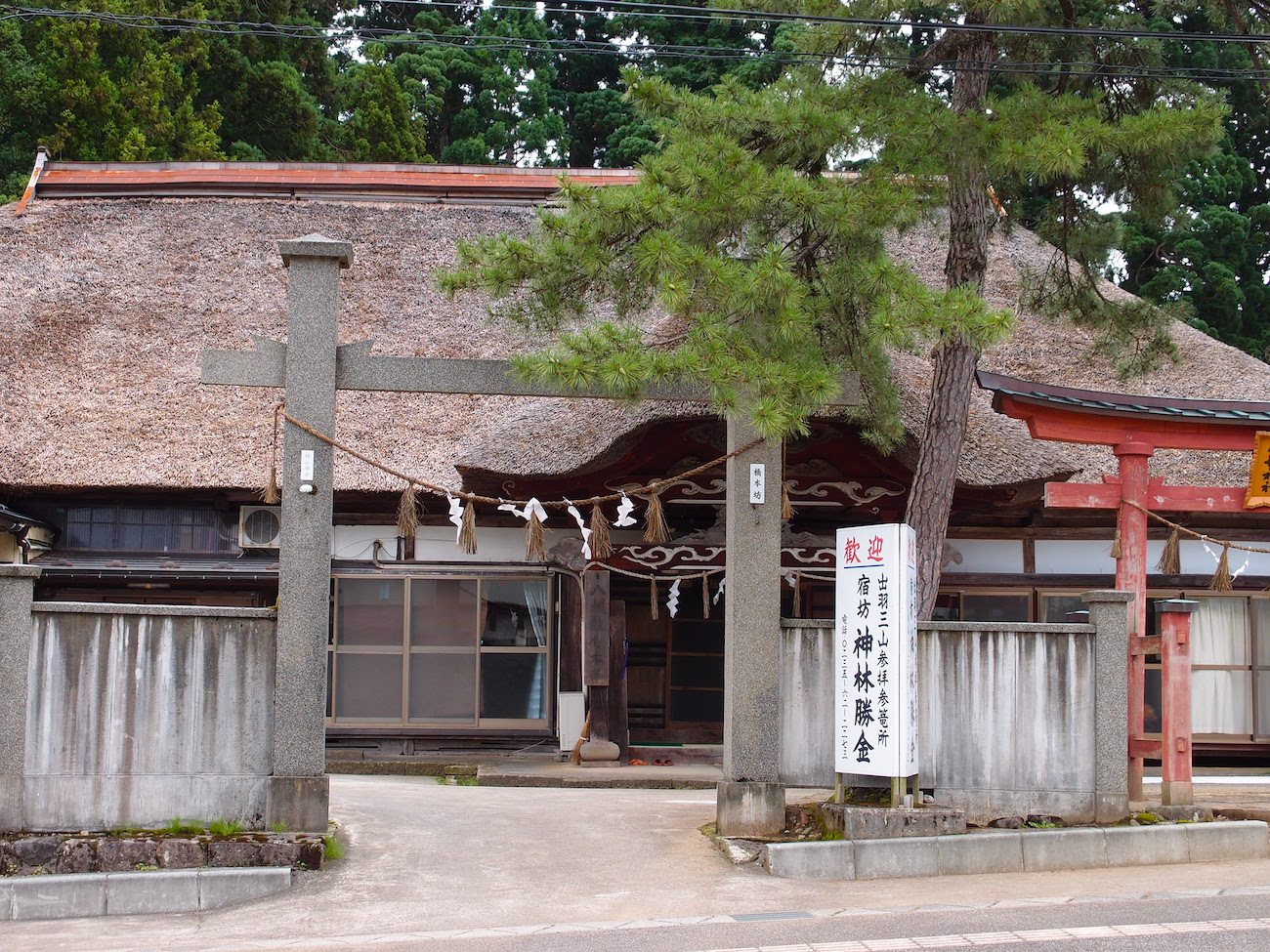One of Yamagata’s sacred sites, a collection of three mountains collectively named Dewa Sanzan, has been worshipped for ages.
It’s said “If you make pilgrimage to Ise in the West, you must make pilgrimage to the end of the East.” (here, that means Dewa Sanzan). It’s a mysterious and sacred site in the north, and it’s said that if you visit, you can be reborn.

Dewa Sanzan was originally an important site for Shugendo worshippers to be reborn while still alive, where the three mountains represent a person’s present (Mount Haguro), past (Mount Gassan), and future (Mount Yudono). Even now, mountain monks and people dressed in white can be seen coming to worship, which creates a very sacred atmosphere.

the official route is first to pray for the happiness of this world at Mount Haguro, the paradise and afterlife at Mount Gassan, and rebirth at Mount Yudono, but if you’re a beginner, it’s recommended to aim for the Dewa Sanzan Shrine on the summit of Mount Haguro.
The Dewa Sanzan Shrine houses the ‘Mount Haguro Sanjingosaiden’, a sanctuary which deifies the three gods of Mount Haguro, Mount Gassan, and Mount Yudono. You can more easily ‘tour’ the three mountains by visiting it.
After taking a 30-minute bus ride from the Tsuruoka Station, you arrive at the Haguro Center. Right before you is Zuijinmon, the main entrance to the holy precincts of the Dewa Sanzan Shrine.

Upon entering, a 1.7km(1mi), 2446 stair stone path begins. Along both sides of the stone steps are a series of 350-500 year old cedar trees awarded 3 stars by the Michelin Green Guide Japan.


The stairs going up are quite tough, but, strangely as you’re walking along the wide road surrounded by enormous cedar trees, you feel a sense of safety and relief akin to being in your mother’s womb.
If you’re feeling bored, watch the stone steps as you continue climbing, and you’ll surely sometimes notice small glasses and lotus flowers have been carved. It’s said that if you find 33 of them, your wish will come true. By the way, I only found about 5…

After climbing for about an hour, you’ll reach the Dewa Sanzan Shrine. Visit the Mount Haguro Sanjingosaiden set up amidst the magnificent shrine and experience rebirth.

The water level in the ‘mirror pond’ in front of the shrine has remained virtually unchanged over the years, and so has been worshipped for its mysterious nature. By the way, the mirror that was brought up from the pond can be viewed at the nearby Dewa Sanzan History Museum.

Well then, you could be satisfied and head back to Tsuruoka by bus at this point, but from July to September, there’s a bus from the summit of Mount Haguro to Mount Gassan, so I also recommend checking it out if you have the chance.
If you want to head to the summit, you’ll need to prepare for some real hiking, but it’s also fun to stroll about the area around the bus stop which has nearly the same elevation.
In shugendo belief, Mount Gassan represents the past and the afterlife, and it’s also the main peak of Dewa Sanzan. Mount Gassan Shrine is located at the peak, and it enshrines ‘Tsukuyomi No Mikoto’, the younger brother of the sun goddess ‘Amaterasu’ who is the highest deity in Japanese Shinto.

Although it had been sunny up until then, when I got off the bus at Mount Gassan, the sky suddenly became obscured by fog. The atmosphere was really like an entrance to the afterlife.

I was deeply moved by the mysterious scenery and atmosphere. It made me really understand why people in the past felt that this was the entrance to the afterlife.

This time I didn’t bring any sort of hiking equipment, so I gave up on going to the summit. Next time, I’d love to take the challenge.
If you visit during summer, you may want to experience a 3-day, 2-night traditional mountain pilgrimage tour package of Mount Haguro, Mount Yudono, and Mount Gassan.
I also recommend staying at pilgrimage-friendly accommodations called ‘Shukubo’, literally meaning ‘sleeping with monks’, or temple lodging.

The cuisine served is called ‘shōjin-ryōri’ and is typically vegetarian.

What's Your Reaction?
Trip Planner Japan's Webmaster. love solo travel, photography, history, nature, foods, architecture, handcraft.
